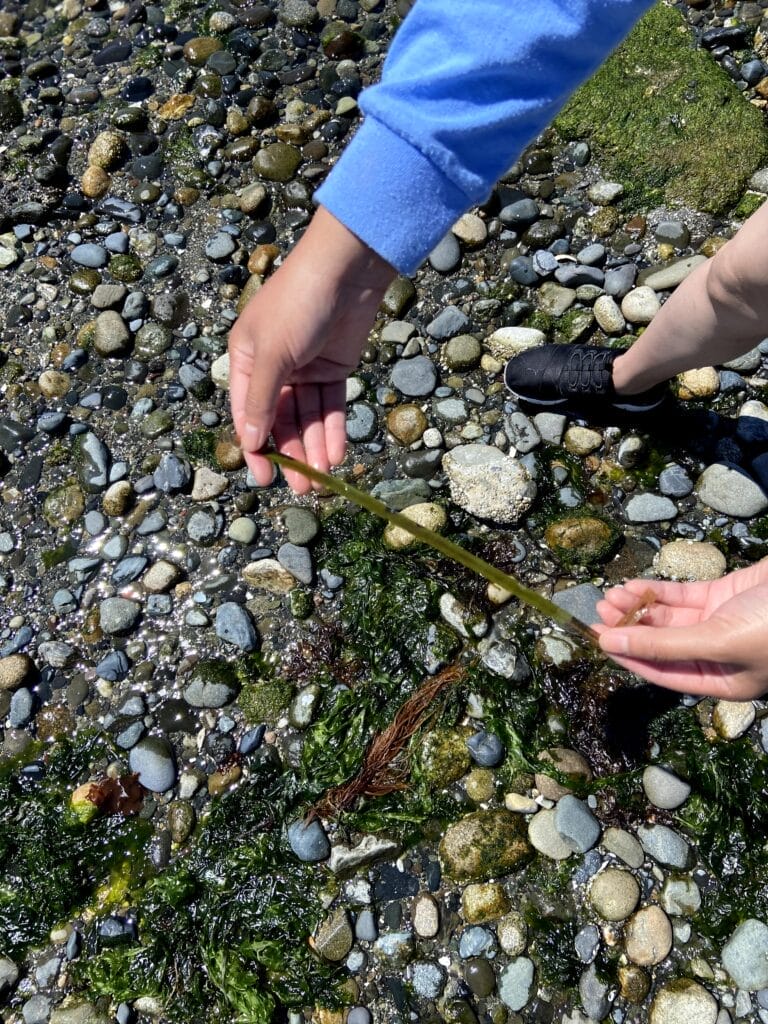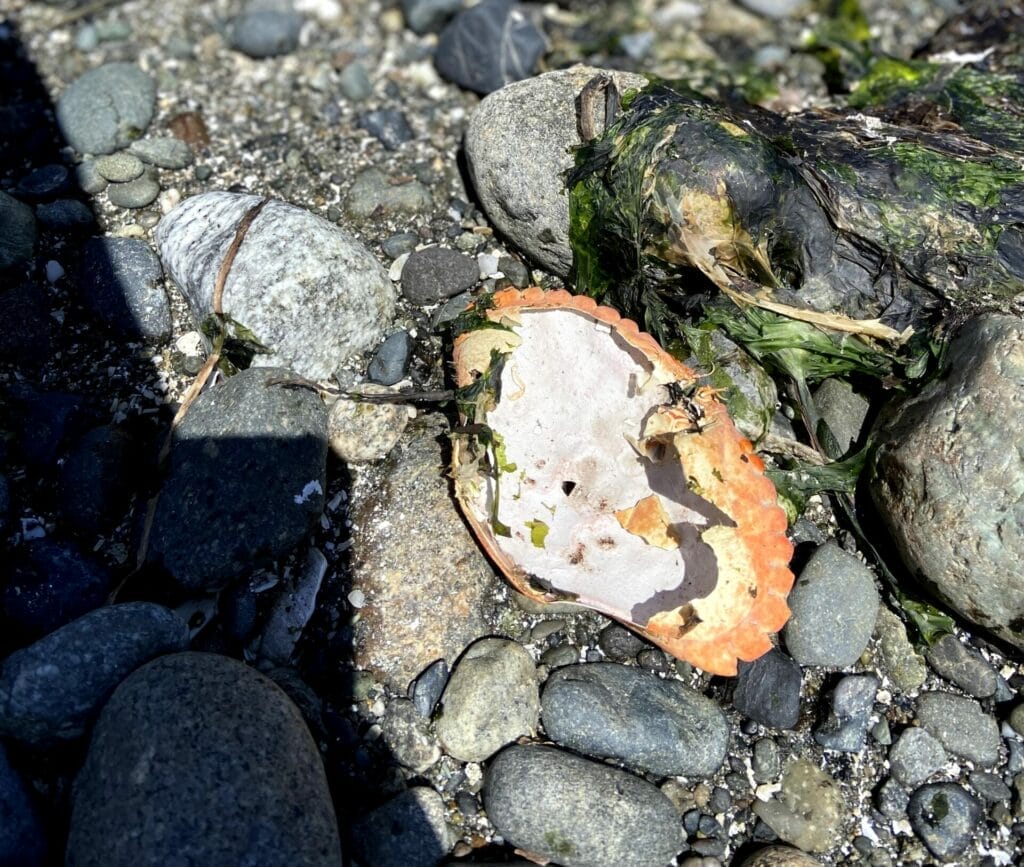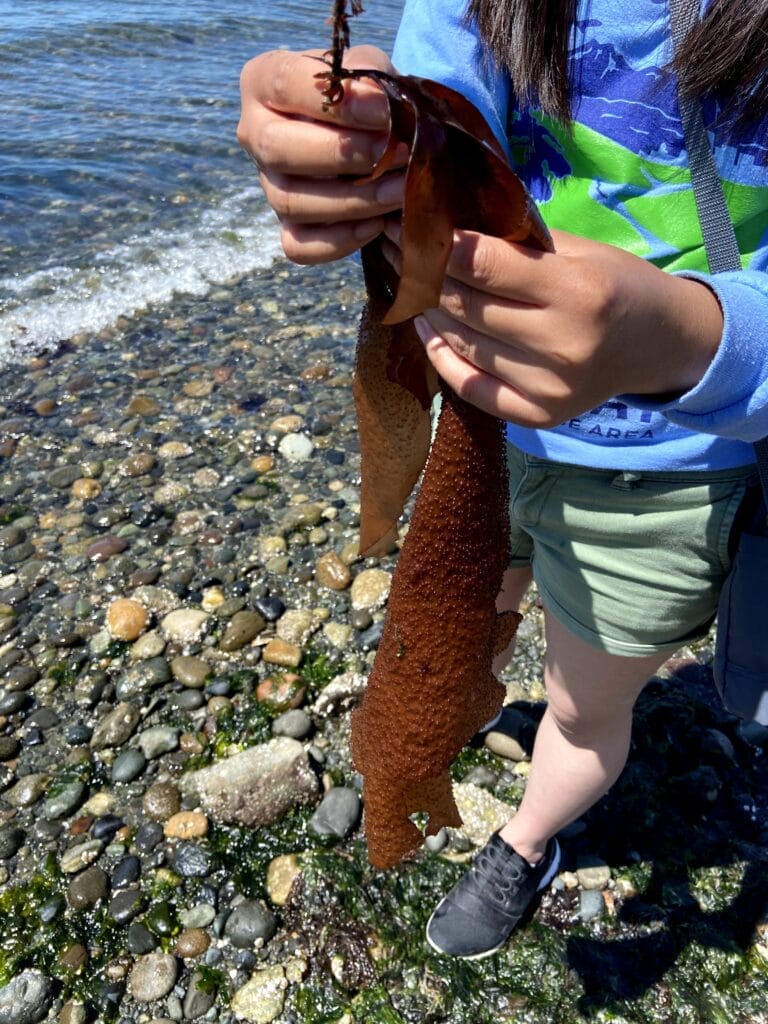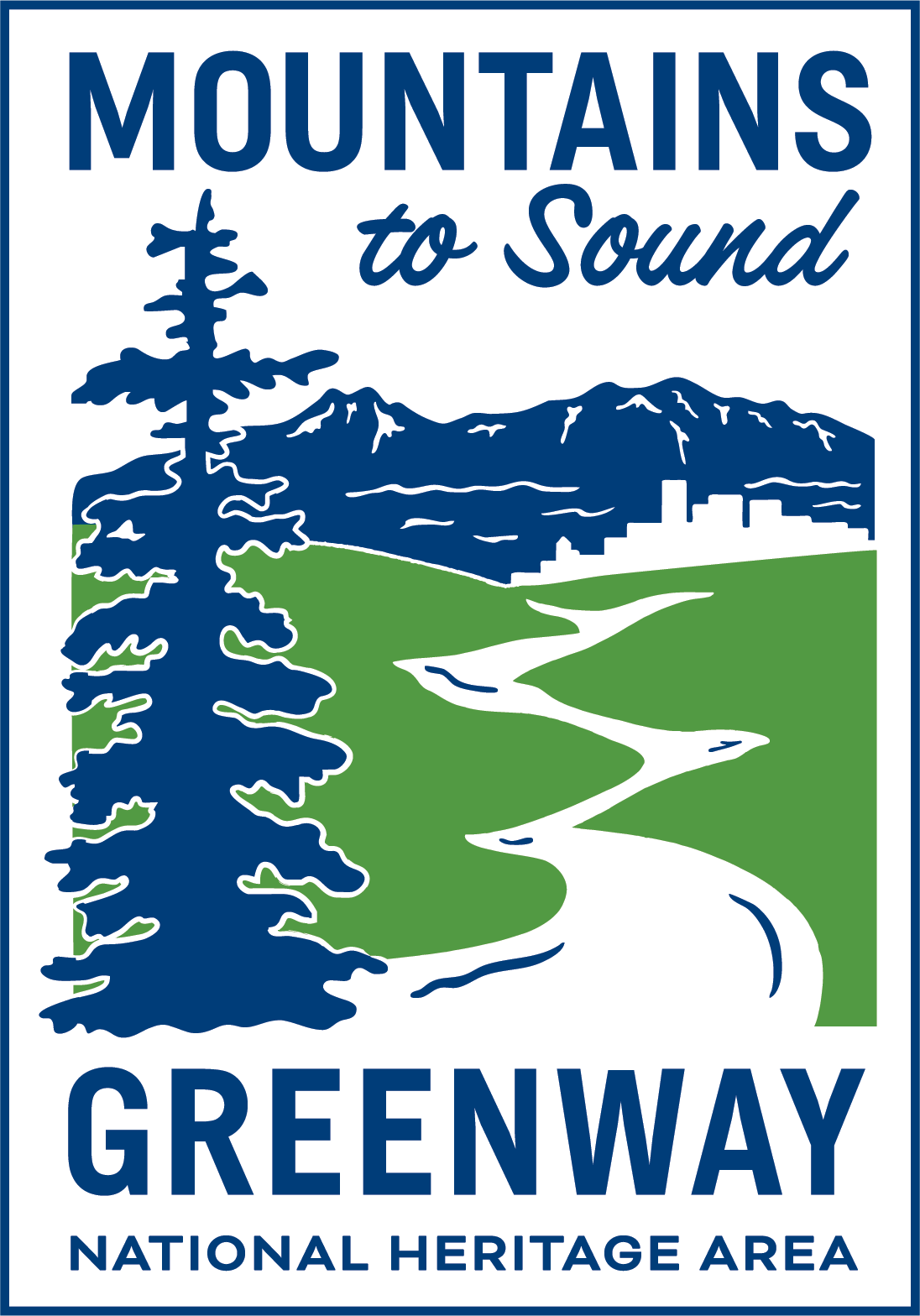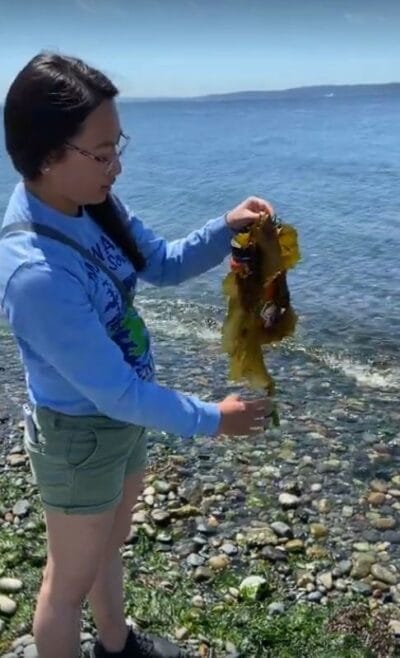Exploring Alki Beach with a Beach Naturalist
One of the best parts about living in the Pacific Northwest is that we can explore the beaches year-round. During the summer the Seattle Aquarium runs the Beach Naturalist program, a group of volunteers that “are local residents who care about Puget Sound beaches and want to help protect them.” On low tide days and at different beaches around the Seattle region, people who are curious about what kind of life lies on the tidal shores can go investigate the beach themselves and find beach naturalists there to answer any questions about the marine life present.
One of the Greenway Restoration Crew members, Malise, is a Beach Naturalist. I met up with her near Alki Beach to talk about some of the marine life that could be spotted midday on the beaches in the summer.
Malise studied Marine Biology at the University of Washington’s Friday Harbor Labs on San Juan Islands to learn more about Washington state’s natural history and gain research skills. During her two quarters there, she fell in love with the field and took classes such as Marine Biology, Marine Botany, Marine Invertebrate Zoology, and Biology of Fishes that taught her how to identify common species in the Pacific Northwest. The classes were hands-on and engaging with field trips around northern Puget Sound. With all of the knowledge she gained about the marine world, she felt compelled to share it with others, and decided to become a Beach Naturalist.
There is no “typical” day as a Beach Naturalist, but during a four hour shift it’s not unusual for Malise to have up to a hundred different conversations with interested members of the public. She answers a lot of specific questions and she’s identified everything from Turkish Towel algae to eel grass to crabs! Although she hasn’t had any super unusual sightings she has had a lot of people bring her moon snail egg collars which kind of look like toilet plungers or could be mistaken for trash, but actually are hundreds of thousands of moon snail eggs mixed in with sand and solidified by the snail’s slime.
Malise said that people also see what they think are dead crabs scattered around the beach, but Malise explained that an empty crab shell is likely a molt of the crab, and it just grew out of that shell.
Encouraging Stewardship
Overall, taking care of the beaches in the Seattle area is important. Education through programs such as the Beach Naturalist one is just the start. What we do on shore affects what happens in the water and leaving no trace includes picking up pet waste which can contain harmful bacteria and making sure to pack out trash. Keeping our waterways clean is important for the health of the ecosystem.
There are many important factors of a healthy ecosystem. We can use our beloved salmon as an example of why protecting waterways is important because throughout their life, they will live in multiple different habitats and are an essential food source for many other living things. They begin their life as an egg laid in a gravel bed in a river which needs to have clean, cool, and clear water. As juveniles, they’ll swim down stream and out towards the Puget Sound and need to seek refuge in eelgrass beds before going out into the ocean. In the ocean, salmon eat as much as possible and store up energy for the long trip back to their natal spawning grounds to reproduce. After spawning, salmon die but they don’t end their ecological journey there. Salmon carcasses contain nutrients that are absorbed by plants around the river. There is a reciprocity between salmon and trees this way. The trees help keep the rivers shaded and cool, and the salmon help feed the trees.
By protecting salmon habitat, we protect much more than salmon themselves. We help feed large predators like the endangered southern resident orcas and salmon also benefit the trees in their riparian habitat.
As a Greenway Restoration Crew member, Malise works to actively to improve salmon habitat by removing invasive species like blackberry and planting native trees along rivers and in wetlands.

